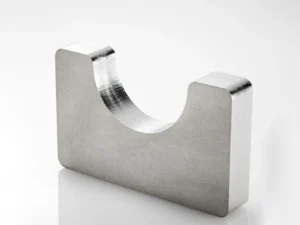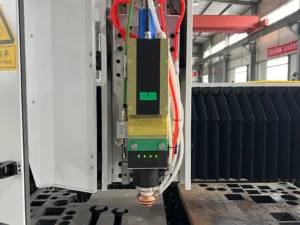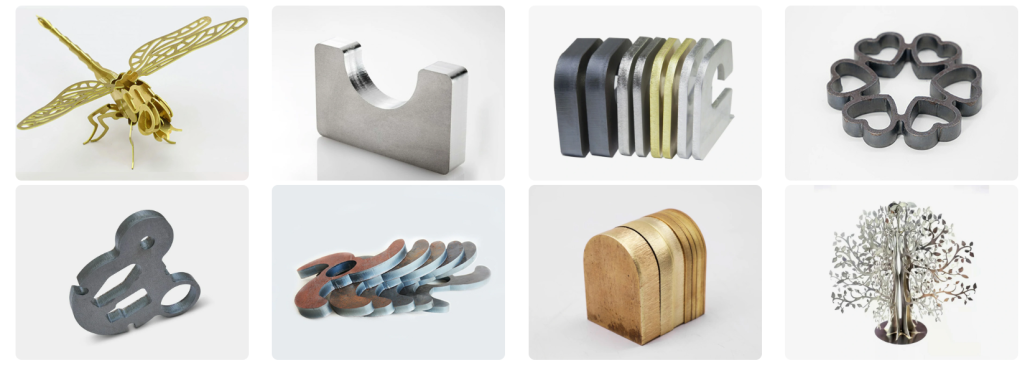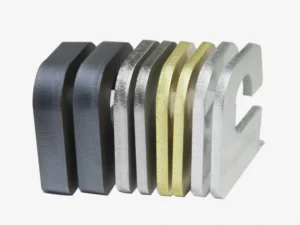Metal objects are something we all know. We use a variety of metal things, including machine components and household equipment. So, metal fabrication is a critical manufacturing method. However, you can do metal fabrication in many ways. But which one is adequate is the real question. Similarly, sheet metal cutting is no different. This laser cutting vs waterjet cutting guide will show you which method is correct. Both waterjet and laser cutting are widely used in workshops and metal industries. However, in today’s world, laser cutting has replaced many traditional sheet metal cutting methods. There are many reasons why. Laser cutting vs water jet cutting, what is the difference? In this article, you will be introduced to the pros and cons of each technique. You will understand why laser cutting has replaced many traditional ones.
What is Sheet Metal Cutting?
Every metal part’s first form is a sheet or plate. Later, people put them in various shaping machines to get different forms. Sheet metal cutting is one crucial metal-forming method in this case.
By its very name, sheet metal cutting involves cutting metal plates. Although there are different kinds of cutting, the goal is always to make precise cuts with a high range. Because of this, various sheet metal cutting methods appear. The following few methods are widely used for cutting sheet metal.

Metal Shearing
Metal shearing is the most traditional way of cutting metal plates. It uses shear blades to do this job. Metal shearing is generally the most conventional method of cutting sheet metal.
This way of cutting metal plates is ideal for cutting straight lines. You only need to put the metal plate at the right location and then push the button. Then, the shearing machine applies force to shear through it.
Plasma Cutting
From the name, you can realize that this method uses a plasma torch for cutting sheet metals. Plasma is a high-temperature or superheated matter. The metal starts to melt where it touches metal. You can cut the metal quickly this way. One of the best benefits of this method is that you can cut thick metals faster.
Gas Cutting
Gas cutting has many names. Some call it flame cutting, while professionals call it oxy-fuel cutting. It is one of the most popular methods in workshops and quick repair shops. When you observe this process, you will find that the operator uses two different tanks. Here, one tank is for oxygen, and the other one is for fuel. This method is incredibly excellent for ferrous metals.
Water Jet Cutting
Cutting metals with water jets uses high-pressure water. In most cases, people use abrasives to increase their power. This is a cold-cutting procedure; therefore, your material does not need to be heated. You will learn more about it later.
Laser Cutting
Laser cutting is the latest technique and is widely used today. It uses a very focused laser light. As soon as the laser hits the surface, the temperature rises quickly. That’s where the stuff quickly melts and evaporates. This method helps cut material with high dimensional accuracy and is highly suitable for cutting complex designs.
What Factors Matter the Most When Cutting Sheet Metal?
Metals usually come with varying properties. You might already be familiar with this. For example, steel has many types and grades. The same goes for aluminum or copper. They need much force to break and much heat to melt. Because of this, you need to be careful about the following things when cutting sheet metal.
Type of Metal
Each metal behaves differently when you cut it. Some metals are soft, while some are very strong. Like aluminum, it doesn’t need too much pressure to cut. In contrast, hard metals like SS often require too much pressure. Therefore, you must know what kind of metals you are working with.
Type of Cutting Method
The next thing you must be careful with is the type of cutting method. Not all methods are suitable for metals. Some may give you more precision, while some may save you the cost. Also, different metals behave differently with various types of metals.
Tool Sharpness
Along with the above factors, you must also pay attention to your tool’s sharpness. Dull blades or worn-out tips will give you rough edges, making your work harder. Try to ensure you use a good tool and maintain it regularly.
Heat Generation
Heat can cause some problems when cutting metals. It can cause distortion or even warping, which can be a real headache. It’s wise to manage this using the correct cutting speed and technique.
Safety
Safety is always the priority. There is no negotiation with safety gear. Steel plates often come with sharp corners; you will get sharp edges even after cutting. One mistake can lead to accidents, which may lead to life-threatening situations.
Laser Cutting VS Water jet Cutting: Which Method is the Best for Sheet Metal Cutting?
Plasma cutting, gas cutting, or shearing have many limitations. These limitations typically make laser or waterjet cutting the preferred technique. This section will discuss these techniques and find the best option.
Laser Cutting vs Waterjet Cutting: Cutting Speed
Speed is critical in industry, and cutting sheet metal is no different. Both laser cutting and waterjet cutting can be automated. You can employ PLC or CNC systems to do this. However, laser cutters often give quicker solutions than waterjet cutting.
As you know, laser cutting uses strong waves to cut through things. In this case, the type of laser is crucial. Fiber laser cutters are typically ideal for cutting metals. Conversely, when a water jet cuts, a sharp stream of water cuts through things. To get a better cut, abrasive and water are sometimes mixed.
Water jet cutting isn’t exactly slow. It’s just slower in general than lasers. Suppose you are using thicker materials, and it’s even slower. Therefore, laser cutting should be your ideal choice when you need a precise cut on thicker sheets.
Laser Cutting vs Waterjet Cutting: Precision and Quality
Precision matters most when working with machines or auto parts. For instance, laser cutting can get very close, often to 0.01 mm. This level of detail is excellent for cutting and creating things that are hard to understand.
Laser cutting is more accurate than waterjet cutting, but not as much so. A rush of water under high pressure is sometimes mixed with rough things to do it. On the other hand, waterjet cutting can be used to get very close to perfect accuracy. However, they might not be as accurate with thin materials as lasers.

Laser Cutting vs Waterjet Cutting: Material Versatility
Both laser cutting and waterjet cutting techniques are versatile. However, waterjet cutting is limited to thinner and more sensitive metals. It may break the thin metal plates when the water jet cuts, but this problem can often be solved by the laser cutting method.
Laser cutting is a highly versatile solution. You can work with almost all types of materials. However, you must be very careful when choosing a suitable laser device. They are typically different based on different materials.
Metals usually require 10.6 micrometers, but this wavelength might create burn marks on non-metals. Therefore, for non-metals, you must choose laser wavelengths more than this. FYI: fiber laser devices are ideal for metals, and CO2 lasers are suitable for non-metals.

Laser Cutting vs Waterjet Cutting: Heat-affected zone
Laser cutting uses a highly focused laser beam to cut through various materials. It rapidly increases the heat in that particular area and vaporizes. Thus, you might see a HAZ area near the edges. However, you can eliminate this problem by following an expert’s advice.
On the other hand, waterjet cutting doesn’t involve any heating. Therefore, you won’t see any HAZ area near the edges.
Laser Cutting vs Waterjet Cutting: Cost
Cost is a significant consideration when planning to invest in something. In the case of sheet metal cutting, cost plays a crucial role, but you must also pay attention to quality.
Laser cutting can be more cost-effective, especially for thin to median-thickness metals. It is ideal for mass production and is highly efficient. Also, laser cutting doesn’t need consumables, so its operating cost is low.
On the other hand, waterjet cutting equipment requires higher upfront costs. It also requires consumables like water and abrasives. Special equipment is needed to create sufficient pressure. Moreover, a waterjet cutting machine requires much more maintenance. Overall, it is a costly and less effective method.
Laser Cutting vs Water jet Cutting: Edge Quality and Finishing
Laser and water cutting offer impressive edge quality but differ in the final quality. It can sometimes leave a light burr or rough edges. It typically happens when you deal with thicker metals. However, this can be solved by choosing a proper laser device and polishing it out quickly.
Since waterjet cutting doesn’t involve heating, it often leaves a clean and smooth edge. This cut won’t distort or discolor the material, making it ideal for projects where a smooth edge is critical.

Laser Cutting vs Waterjet Cutting: Environmental Impact
You must be careful whether your factory or business is affecting the environment. Waterjet cutting uses high-pressure water along with abrasives. This method produces dust, which may affect the environment if not handled carefully. In contrast, laser cutting doesn’t need consumables, and it is a non-contact process. It is safe and environmentally friendly.
Laser Cutting Has Replaced Many Traditional Methods Today!
From the above discussion, you can see why laser cutting is an ideal option. It is fast, safe, and versatile. It is also a cost-effective method. Although the initial cost is high, it has a meager operating cost. Because of this, laser-cutting technology has replaced many traditional methods in the modern world!
